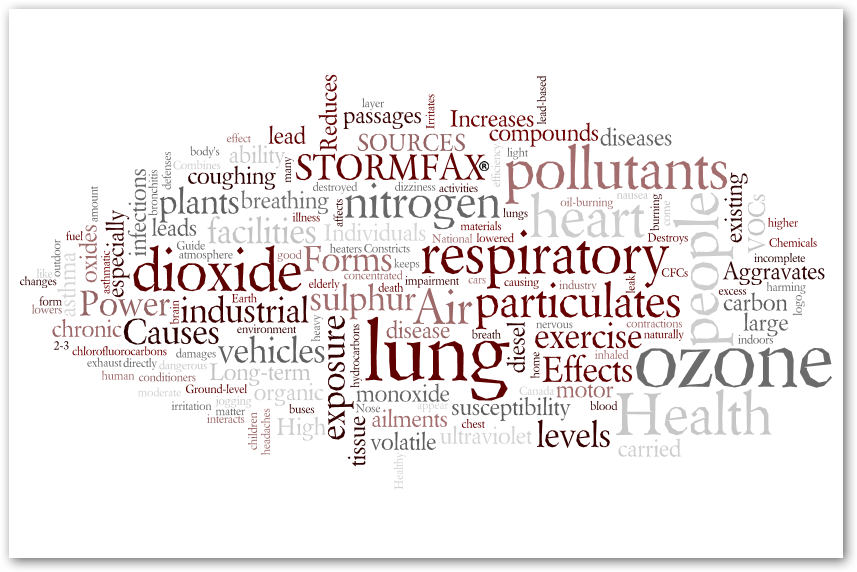| POLLUTANTS |
HEALTH EFFECTS |
SOURCES |
| Carbon Monoxide |
Weakens heart contractions and lowers the amount of oxygen carried by the blood. Reduces the ability to exercise and is dangerous for people with chronic heart disease. Causes nausea, dizziness, and headaches. When concentrated, causes death. |
Primarily from motor vehicles, but also from incomplete burning of any fuel. |
| Sulphur Dioxide |
Aggravates existing lung diseases, especially bronchitis. Constricts breathing passages in asthmatic people and people doing moderate to heavy exercise. Causes wheezing, shortness of breath, and coughing. High levels of particulates appear to worsen the effect of sulphur dioxide. Long-term exposure to both pollutants leads to higher rates of respiratory illness. |
Power plants, large industrial facilities, diesel vehicles, and oil-burning home
heaters. |
| Nitrogen Dioxide |
Nose and throat irritation, especially in people with asthma. Increases susceptibility to respiratory infections. Combines with volatile organic compounds (VOCs) to form ozone. |
Power plants, large industrial facilities, and motor vehicles. |
| Ozone |
Irritates lungs and breathing passages, causing chest pain, sore throats and coughing. Increases susceptibility to respiratory infections and reduces the ability to exercise. Effects are more severe in people with asthma and other respiratory ailments. Long-term exposure leads to scarring of lung tissue and lowered lung efficiency. |
Forms in the air from other pollutants -- volatile organic compounds (VOCs) and nitrogen oxides. Ozone does not come directly from tailpipes or smokestacks, but forms when sunlight interacts with exhaust hydrocarbons and nitrogen oxides. |
| Particulates |
Aggravates existing heart and lung diseases, changes the body's defenses against inhaled materials, and damages lung tissue. The elderly, children and those with chronic lung or heart disease are most sensitive. Lung impairment can persist for 2-3 weeks after exposure to high levels of particulate matter. Chemicals carried by particulates can also be toxic. |
Diesel cars, trucks and buses, power plants, industry and many other sources. |
| Lead |
Destroys the brain and nervous system. |
Some industrial facilities and from lead-based paint. |




 Individuals with heart or respiratory ailments should stay indoors.
Individuals with heart or respiratory ailments should stay indoors. Healthy individuals should reduce outdoor activities, such as jogging.
Healthy individuals should reduce outdoor activities, such as jogging. Ultraviolet Protection Safety Guide
Ultraviolet Protection Safety Guide Please read our Legal Notice and our Privacy Statement.
Please read our Legal Notice and our Privacy Statement.